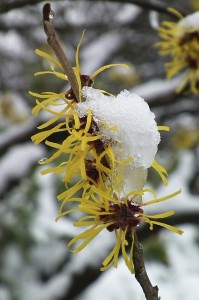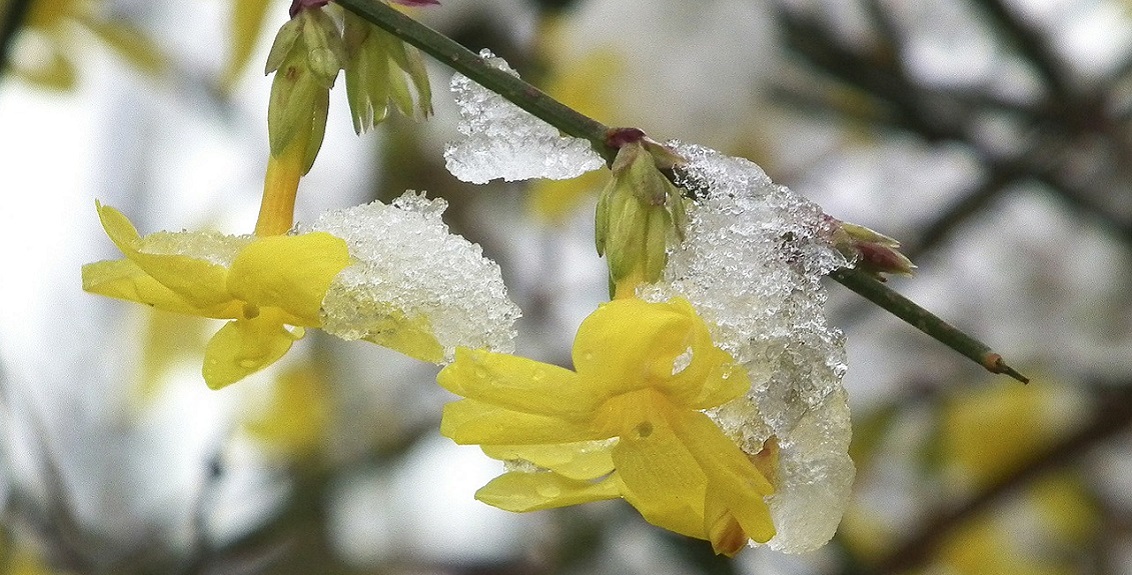Is your garden denuded of colour and interest over the winter months? If you are thinking that it is not possible to grow flowers that you can use to fill your home with colour and fragrance over winter, then keep reading! This is a good time of year to start planning for the coming year and today we have lots of flowering suggestions for you!
Hamamelis mollis
Hamamelis or Witch Hazel is a fragrant winter flowering shrub with spider-like flowers in stunning shades of yellow, orange and in rare cases red. Once leaves have fallen, spidery flowers bloom in vibrant colours which breathe fantastic life into a winter garden when other plants are dying back. These intriguing blooms are sweetly fragrant and very eye catching in the bare winter season. From late winter all the way through to March, this plant will put on a terrific display. Hamamelis mollis is a bright spot in the winter garden. It flowers with sweetly scented (witch hazel scent) yellow flowers from December through to March on bare stems. The large rounded leaves that follow colour well in autumn giving it two seasons of interest.
How To Grow
- It needs a neutral to acid soil and benefits from a mulch of peat or garden compost each year.
- It is quite hardy and grows in full sun to light shade. Of course full sun will show off the winter flowers better than shade.
- It has a medium growth rate to an ultimate height of 5m after over twenty years in favourable conditions.
Don’t let its ultimate size deter you from using this beautiful winter flowering shrub.

Chimonanthus fragrans
There are very few people who would object to a vase filled with immense waxy blossoms in mid-January with a scent of lemon-peel and a tinge of apricot. If you plant Chimonanthus fragrans that is exactly what you can have. One of the finest plants that the winter garden can offer, both for the strange – but alluring – flowers borne on the naked stems between November and March (if grown against a warm wall), and also for the delicious and penetrating spicy fragrance which they give off.
How To Grow
Chimonanthus is happy in any reasonable, well-drained garden soil, even where there is chalk.
It likes a sunny, sheltered position and flowers best when trained against a south wall, or planted near one.
When the shoots are being ripened in summer, they will benefit from the heat given off by the wall at night.

Once they are well-established, the longer shoots of trained wall plants can be trimmed back to two buds from their base, ideally immediately after flowering. Otherwise, remove the oldest wood of specimen shrubs after flowering, if the shrub is becoming congested.
Chimonanthus fragrans should not be pruned when young, as this may delay the onset of flowering.
More Ideas
These Winter Flowering Shrubs can make your winter garden more interesting and they can provide colour along with beautiful scent.
